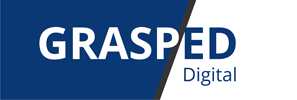An outstanding customer experience is based on user segmentation.
Businesses must deliver more thoughtful and meaningful experiences to their customers, regardless of the industry.
Market segmentation enables you to deliver the right message to your audience by effectively focusing on particular consumer groups.
This chapter will define market segmentation, discuss its benefits, and show you how to start.
What is Market Segmentation?
In marketing automation, segmentation groups users, leads, and customers into categories based on shared traits.
To better understand the target audience, these characteristics may be based on demographics, location, needs, blog subscribers, paying customers, shared interests, people who have visited the pricing page, and other psychographic or behavioral criteria to understand the target audience better.
When you segment your audience, you can improve the relevance of your marketing campaigns, ads, landing pages, and emails.
The benefits of market segmentation:
Market segmentation that is done correctly can benefit businesses greatly.
Some of these benefits include:
Stronger marketing messages:
You no longer need to be general and ambiguous; instead, you can speak directly to a particular audience in a manner they can relate to because you are aware of their traits, preferences, and requirements.
Targeted digital advertising:
Market segmentation enables you to identify and define the characteristics of your audience so that you can focus your marketing efforts on customers with particular ages, locations, buying preferences, interests, etc.
Creating successful marketing strategies:
Understanding your target market gives you a head start on the approaches, techniques, and solutions to which they will be most receptive.
Getting the right clients:
Market segmentation enables you to develop targeted, direct, and clear messaging that draws in the clients you want to do business with.
Promoting brand loyalty:
Customers are likelier to stick with your brand when they feel heard, individually well-served, and trusted.
Driving growth:
You can persuade customers to make additional purchases from you or to upgrade from a lower-priced good or service.
Increased profits:
Prices can be set according to how much a customer is willing to spend because each customer has a different disposable income. By being aware of this, you can prevent yourself from overselling or underselling.
Product development:
You'll be able to create different products tailored to your various customer bases while keeping your customers' needs at the forefront of your design process.
Now that you understand the benefits of market segmentation let's move on to market segmentation models.
Common Market Segmentation Models
The most successful digital marketers use segmentation to create highly personalized recommendations, craft targeted copy, nurture leads, and convert free users into paying customers.
The following characteristics can be used to categorize any audience or group of users:
- Demographic — Age, income, gender, education, marital status, etc.
- Geographic — A country, state, city, or region
- Psychographics — Personality, outlook, principles, interests, and pastimes
- Technographic — users of your website who are on mobile devices, desktop users, app users, etc.
- Behavioral — How users interact with your product, including everyday actions, features used, email activity, and usage patterns.
- Need-based — What prompted them to use your product/service? The features they seek in a product. The pain points they are attempting to alleviate.
The list above is merely a few examples. You can think of them as guiding milestones in your email marketing or marketing automation tool to help you organize your users into buckets.
Next up,
How can you Implement Market Segmentation?
Here's how to develop a dynamic strategy to keep segments updated with your customers' changing behavior:
Set a goal and gather data:
Before you start, you must ask yourself what you hope to accomplish from this exercise. You must specify your motivations for segmenting your user base.
Your objectives must be precise and particular to your business trajectory because they will determine how you categorize your clients or leads.
Build your segments:
The next step is to start grouping your users into segments after you collect the appropriate data and have some ideas about what segments you want to create.
Your market should be segmented according to the criteria you decide to use.
Try each one and find out which one works best for you. Remember, most brands use more than one - so don't be afraid to experiment.
When segmenting, keep your underlying goals in mind.
Improvise, refine, and repeat:
As was previously stated, segmentation is a continuous process. As a result, you'll need to update your segments to reflect shifting needs and behaviors continually.
You should communicate with your team, observe user behavior, and occasionally modify your user segments.
Directly engaging your users through surveys and feedback prompts is another exciting method of improving your segments.
In addition, if you are a startup developing a product and are in the early stages of the process, make sure you adapt your user segments as you fine-tune your solution, rebrand your service, or reorganize your buyer personas.
It is essential to keep in mind that user habits and behaviors change over time. As such, continue to revise your segments and improve them.

